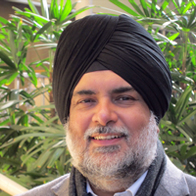Dear Reader
We’ve all experienced turbulence when we fly, and the impact that it has on many travellers. In a few, it causes elevated amounts of uneasiness, while some get petrified, conjuring up plane crash situations in their psyches, others don’t dwell upon it and proceed with whatever they were doing, while children may really appreciate the crazy ride feeling.
The surgical strikes that the Indian Army conducted recently on multiple Jihadist training camps inside Pakistan Occupied Kashmir evoked a sense of pride and a feeling of honour being restored in me. In any case, seeing unlimited open deliberations on national TV, which had a go at inciting feelings to war delirium levels, reminded me of the general population’s response to turbulence while flying. My mother, aged 86, was not troubled as she was unaware of what had happened, because she only watches the “Gurbani” on select stations on TV. However, some of my friends were really anxious and called me, wanting my opinion on whether India was going to war with Pakistan and should they make plans to move to another country? Another chap that I met at cocktails was truly energized, he said this was a decent chance to attack Pakistan and finish them once and for all. The point that I’m trying to make is that media changes your perception and your subsequent reactions. Politicians regularly use image makers and media production houses to leverage all forms of media to change the voters’ perceptions and influence them while making their choices.
Media is considered to be the fourth pillar of democracy, but distorting information,sensationalising non issues or ‘engineering’ content that creates wrong and prejudicial public opinion can be disastrous. And this is precisely what could be happening! Non issues are being highlighted and dissected on television debates in a race to gain maximum TRPs while whipping up sentiments of millions of viewers and impacting their thought processes to form opinions.
The Islamic State of Iraq and Syria (ISIS) understood the power of the media and its impact a few years ago, and today, this fear based oppressor is known for its sophisticated social media outreach. Now, it seems that they are bringing that sophistication to their video propaganda, too. Elliot Greenebaum, a New York filmmaker, who has worked on advertising and feature films says, “They’re taking archival photographs and adding filters to them, and they’re layering the photos so they look divided and exceptionally dynamic; techniques that a Madison Avenue firm would try to deploy on behalf of a client.”
ISIS has created a new propaganda wing, called the al-Hayat Media Centre, that recently released a disturbing video in which they show so called spies being executed, in a scene reminiscent of a slaughterhouse. By leveraging the power of digital communications, news and social media platforms this is being done to spread fear psychosis in the minds of the viewers who differ from the ISIS ideology.
What happens in reality can be digitally manipulated and portrayed to have a different impact on various segments of the audience. On the other hand, what is imagined and showcased digitally can be interpreted into actionable ideas by some persons and can be executed in the real world. Various case studies of criminals confessing to getting ideas from fiction books and movies are available to us.
A Class XI student writes on the similarities that he observed while playing a Virtual Reality game, “Call of Duty”, and ISIS activities, under the ‘View Point’ section of this edition of our magazine.
Do give this edition of SECURITY TODAY a thorough read and keep sending us your thoughts and feedback.
Wishing all a very happy, joyous and Safe Diwali!
Cheers!
G B Singh
Email: editor@securitytoday.in
Follow me on @EditorGB
Connect with me on Linkedin






